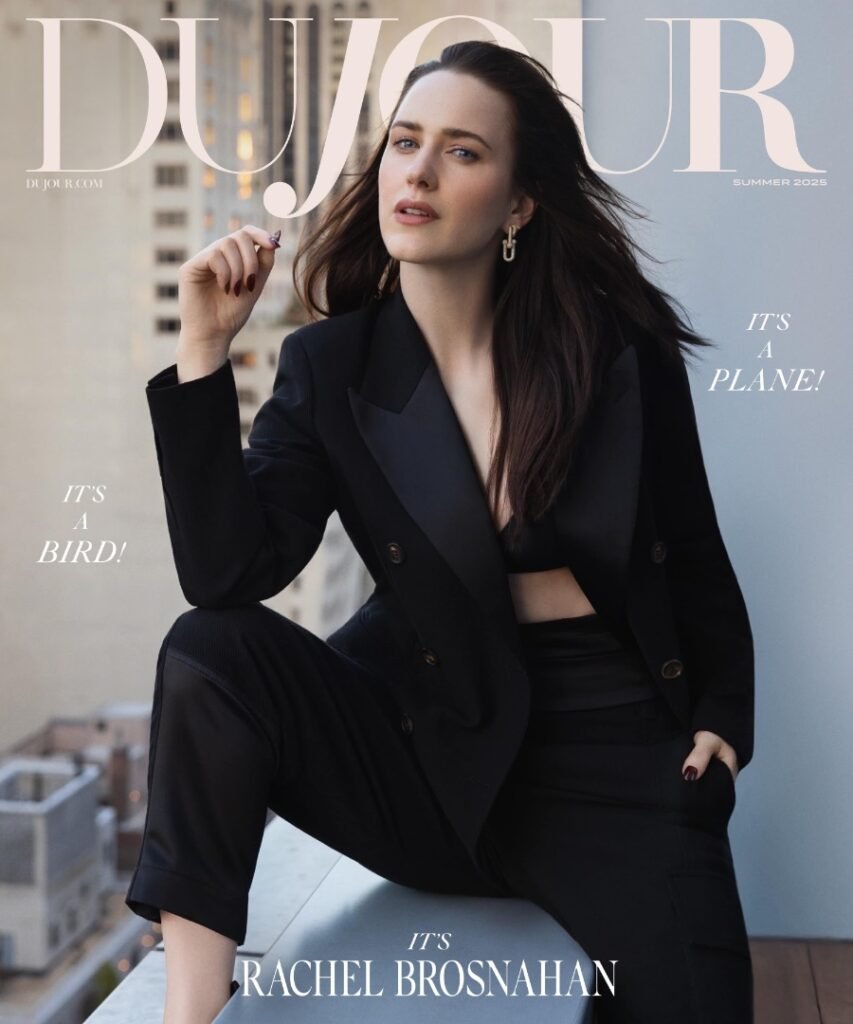The Rise and Impact of Miriam “Midge” Maisel: A Marvelous Icon of New York
When Rachel Brosnahan first stepped into the role of Miriam “Midge” Maisel for Amazon Prime Video’s The Marvelous Mrs. Maisel, she inadvertently took on the mantle of a New York City icon. As Midge navigated the male-dominated world of standup comedy in the 1950s, she became a symbol of female empowerment, leaving a lasting impression on viewers that resonated beyond the screen. Even now, as Brosnahan is set to portray another iconic character—Lois Lane in the upcoming Superman film—Midge remains an indelible part of the cultural zeitgeist.
The Protagonist that Captured Hearts
Miriam Maisel is not just a character; she embodies the spirit of New York itself, evoking imagery of bustling streets, spirited debates, and the relentless chase for dreams. In the eyes of cultural critic Emily Brooks, “Midge Maisel is the epitome of a bold, ambitious woman in a time when such aspirations were often stifled. She represents a shift in the portrayal of women on-screen—one that has been long overdue.”
The Making of an Icon
While the creator duo of Amy Sherman-Palladino and Daniel Palladino crafted Midge’s narrative, it was Brosnahan’s nuance that breathed life into her character. Brosnahan’s performance drew universal acclaim, earning her an Emmy Award and multiple nominations over five seasons.
“Brosnahan’s portrayal of Midge is transformative,” says renowned sociologist Dr. Jenna Marks. “She allows us to witness the internal struggles of a woman trying to break free from societal norms while deftly balancing her relationships and ambitions.” This portrayal is not just entertainment but mirrors the cultural zeitgeist of the modern feminist movement.
- Complexity of Character: Midge is multifaceted, embodying both vulnerability and relentless ambition.
- Cultural Commentary: The show critiques the social norms of the 1950s while remaining relevant to contemporary issues.
- Icon of Empowerment: Midge inspires viewers to pursue their passions, regardless of societal expectations.
The Transition to Lois Lane
As Brosnahan transitions into the role of Lois Lane, the parallels between the two characters become even more intriguing. Both Midge and Lois challenge expectations and redefine their narratives, albeit in different contexts. Brosnahan acknowledges, “Lois is another strong woman; she’s fearless in her pursuit of truth and justice, much like Midge in her quest for respect and recognition in comedy.” This fusion of characters invites viewers to explore the broader implications of female representation in media.
A New Era of Superheroes
In her new role, Brosnahan collaborates with well-known filmmaker James Gunn, aiming to relaunch the DC Universe. Gunn lauds her enthusiasm for the role, calling her “a vivacious amalgamation of talent and charm that captures the essence of Lois Lane.” This partnership symbolizes a new direction for comic adaptations, where strong female leads are increasingly showcased.
The Resonance of Midge in Modern Culture
The impact of Midge Maisel extends beyond the small screen, influencing conversations around feminism, work-life balance, and creative ambition. According to a study by the Global Institute for Women’s Empowerment, shows like The Marvelous Mrs. Maisel have increased visibility for women’s issues in mainstream media by 30% over the past five years.
As Brosnahan steps into the spotlight for the press tour of Superman, it’s vital to consider how Midge’s journey has paved the way for new roles that demand depth and complexity from female characters. “Midge inspires a generation of writers and directors to envision women in more nuanced roles rather than one-dimensional archetypes,” reflects cultural historian Dr. Lisa Meyer.
Global Recognition
Brosnahan’s character, initially confined to the world of stand-up comedy, now resonates globally as she takes on a role that has been portrayed by a series of iconic actresses over the decades. With each portrayal, from Margot Kidder to Amy Adams, Lois Lane has evolved, reflecting contemporary societal standards and issues. “Lois’ evolution signifies a cultural shift; she is no longer just Superman’s love interest but a fully realized character in her own right,” said film critic Marcus Voss.
The complexity of both characters shows how far narratives around women have come, offering new definitions for strength and independence in a rapidly changing world. Rachel Brosnahan’s journey demonstrates that these roles are not just performances but serve as a canvas for broader conversations about gender roles and societal expectations.
As Brosnahan prepares to engage in a whirlwind global press tour, she reflects on her transformative experiences. “I want to be present in each moment, whether I’m on stage, on set, or traveling,” she states. As she embraces her new role, she acknowledges that Midge—her first major character—remains an integral part of her narrative, one that shaped not just her career but the broader discourse around women in media.
The parallels between Midge and Lois offer a powerful commentary on women’s stories and aspirations throughout history. While Brosnahan steps away from Midge, her legacy as Maisel continues to inspire audiences around the world, emblematic of the changing tides in storytelling and character representation.









